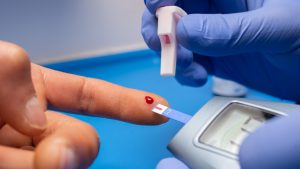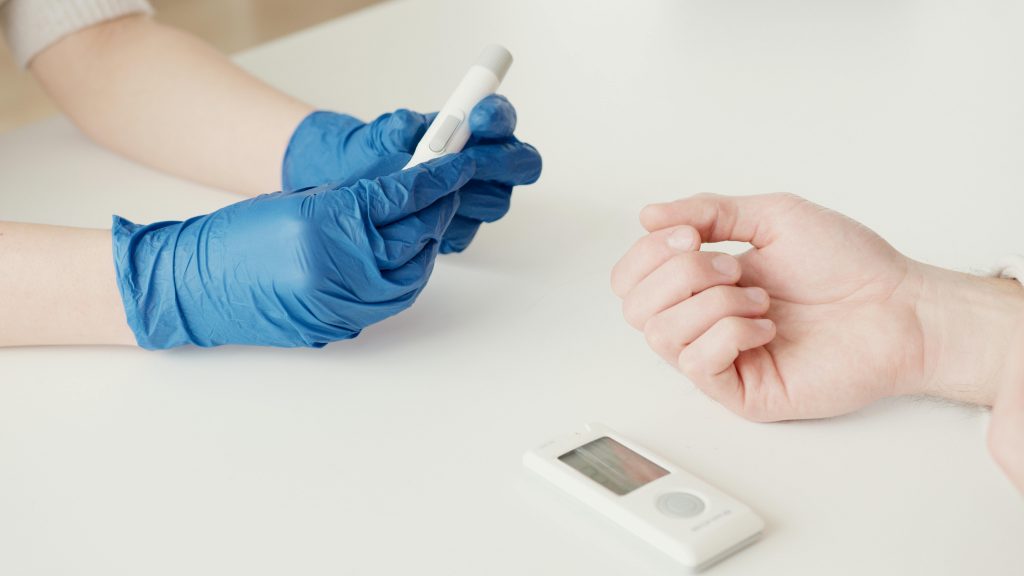Today, we have more tools than ever to take charge of our health and well-being. One of those tools is the glucometer (also known as a blood glucose meter), a small, practical, and incredibly useful device for measuring blood sugar levels. If you’ve ever wondered exactly what this device is and why it’s important, this article explains it in simple terms. We’ll also show you how to use it easily and effectively to improve your quality of life.
What is a Glucometer?
A glucometer is a portable device that allows you to quickly and easily measure the amount of glucose (sugar) in your blood. This device is especially useful for those who need to monitor their glucose levels as part of a healthy lifestyle.
The glucometer works by using special test strips that are inserted into the device. When you place a small sample of blood on the strip, the glucometer provides an accurate reading in just a few seconds, allowing you to see your blood sugar level at that moment.
How Does a Glucometer Work?
Using a glucometer is simple and easy to understand. Here’s a breakdown of the basic steps:
Prepare the Device:
First, insert a test strip into the glucometer. The test strips are designed to react with glucose in your blood, allowing the device to measure your sugar levels accurately.Take a Small Sample of Blood:
Using a lancet, make a small, quick prick on the side of your fingertip. This action is fast and typically doesn’t hurt, although some people prefer to alternate between different fingers to minimize discomfort.Apply the Blood Sample to the Test Strip:
Once you have a drop of blood, place it on the test strip. The glucometer will read the glucose level in the sample and provide a result within seconds.Read the Result:
The glucometer’s screen will show your current blood glucose level. This number helps you understand how your blood sugar is doing at that moment and whether you may need to make any adjustments in your diet or activity levels.
Why is Using a Glucometer Important?
Using a glucometer regularly is a fantastic way to take charge of your well-being. By knowing your glucose levels, you can make more informed decisions about your diet, exercise routine, and overall lifestyle. This kind of self-monitoring gives you peace of mind and helps you stay focused on your health.
Here are some great reasons why using a glucometer is a smart choice:
Take Proactive Control of Your Health:
Measuring your glucose levels regularly helps you understand how your body reacts to different foods, activities, and lifestyle changes. This gives you the opportunity to adjust and feel your best every day.Make Informed Decisions:
Knowing your glucose levels empowers you to choose the right foods, decide on the best time to exercise, or determine if it’s time to relax. Having access to this information allows you to take positive steps toward a healthier, more balanced lifestyle.Improve Your Quality of Life:
Regular use of the glucometer can help you maintain a sense of overall well-being by giving you insight into how your body is responding to your daily habits. This contributes to feeling more energetic, improving your mood, and staying balanced.
Tips for Using Your Glucometer Effectively
Make It Part of Your Daily Routine:
The key to making the most out of your glucometer is to incorporate it into your daily routine. This way, you’ll get a clear picture of how your glucose levels fluctuate throughout the day.Keep Track of Your Results:
It’s helpful to keep a log of your glucose measurements, whether on paper or in an app. This not only helps you monitor your progress over time, but it can also be useful to share your results with your healthcare provider.Don’t Worry About Small Variations:
It’s normal for glucose levels to fluctuate from day to day based on factors like what you eat, your level of activity, or even your mood. What matters is looking at trends over time rather than focusing on one reading in isolation.Consult with a Healthcare Professional:
It’s always a good idea to discuss your readings with your doctor or nutritionist to ensure that you’re interpreting the results correctly. They can offer guidance on how to maintain a healthy balance of glucose levels according to your personal needs.
Conclusion:
A glucometer is an amazing tool that allows you to take control of your well-being in an easy and accessible way. Using it regularly provides valuable information that helps you make informed choices about your diet, exercise, and lifestyle. With a glucometer, you can go through your day feeling more confident and empowered, knowing that you’re actively taking care of your health.
Remember, self-care and knowledge are powerful allies. So don’t hesitate to use your glucometer and take steps toward a healthier, more energized life!

Type 2 Diabetes: Is It Really Reversible?
A recent National Geographic article [link] explores how type 2 diabetes could be reversible with the right approaches. This condition, which affects millions of people worldwide, has long been considered a chronic and progressive disease. However, recent research challenges this perception and suggests that with lifestyle changes and the right approach, remission is possible. The

How Do GLP-1 Drugs Compare? A Breakdown of Ozempic, Mounjaro, and Trulicity
GLP-1 receptor agonists have revolutionized diabetes management, with drugs like Ozempic, Mounjaro, and Trulicity leading the market. But how do these medications compare in terms of effectiveness, side effects, and patient outcomes? Let’s explore their differences and what they mean for diabetes patients. Understanding GLP-1 Medications GLP-1 receptor agonists mimic a natural hormone that helps

Why Has Medicare Spending on Diabetes Medications Skyrocketed in 5 Years?
In the past five years, Medicare spending on diabetes medications has increased nearly fivefold, reaching $35.8 billion in 2023. This surge has been primarily driven by the growing use of GLP-1 drugs such as Ozempic, Mounjaro, and Trulicity. But what is behind this cost escalation, and how does it affect patients and the U.S. healthcare

The Gut Microbiota and Blood Sugar Control: A Hidden Connection
The human gut is home to trillions of bacteria that play a crucial role in digestion, immune function, and even metabolism. Recent research has revealed a fascinating link between the gut microbiota and blood sugar regulation, shedding light on how the balance of microbes in our intestines can influence diabetes risk and overall metabolic health.

The Dawn Phenomenon: Why Blood Sugar Rises While You Sleep
For many people with diabetes, waking up with high blood sugar levels can be frustrating—especially if they didn’t eat anything overnight. This early-morning spike in blood glucose is known as the Dawn Phenomenon, and it happens due to natural hormonal changes in the body. But why does it occur, and how can it be managed?

The Influence of Red Light on Blood: Can It Improve Diabetes?
Type 2 diabetes is a metabolic disease characterized by insulin resistance and elevated blood glucose levels. In the search for complementary alternatives to improve glycemic control, red light therapy has gained attention due to its potential to enhance circulation, reduce inflammation, and optimize cellular function. But what does science say about it? ✨ What is

